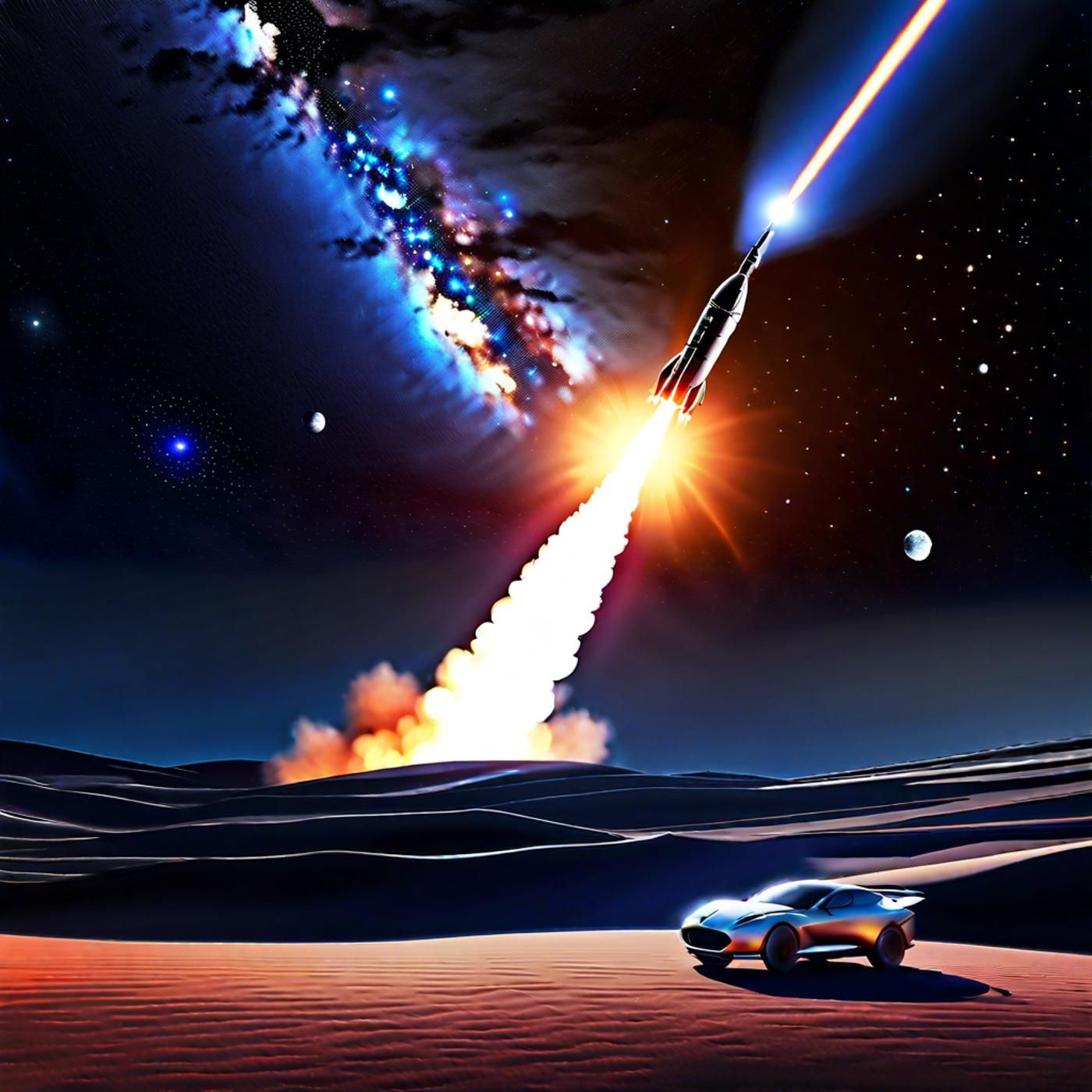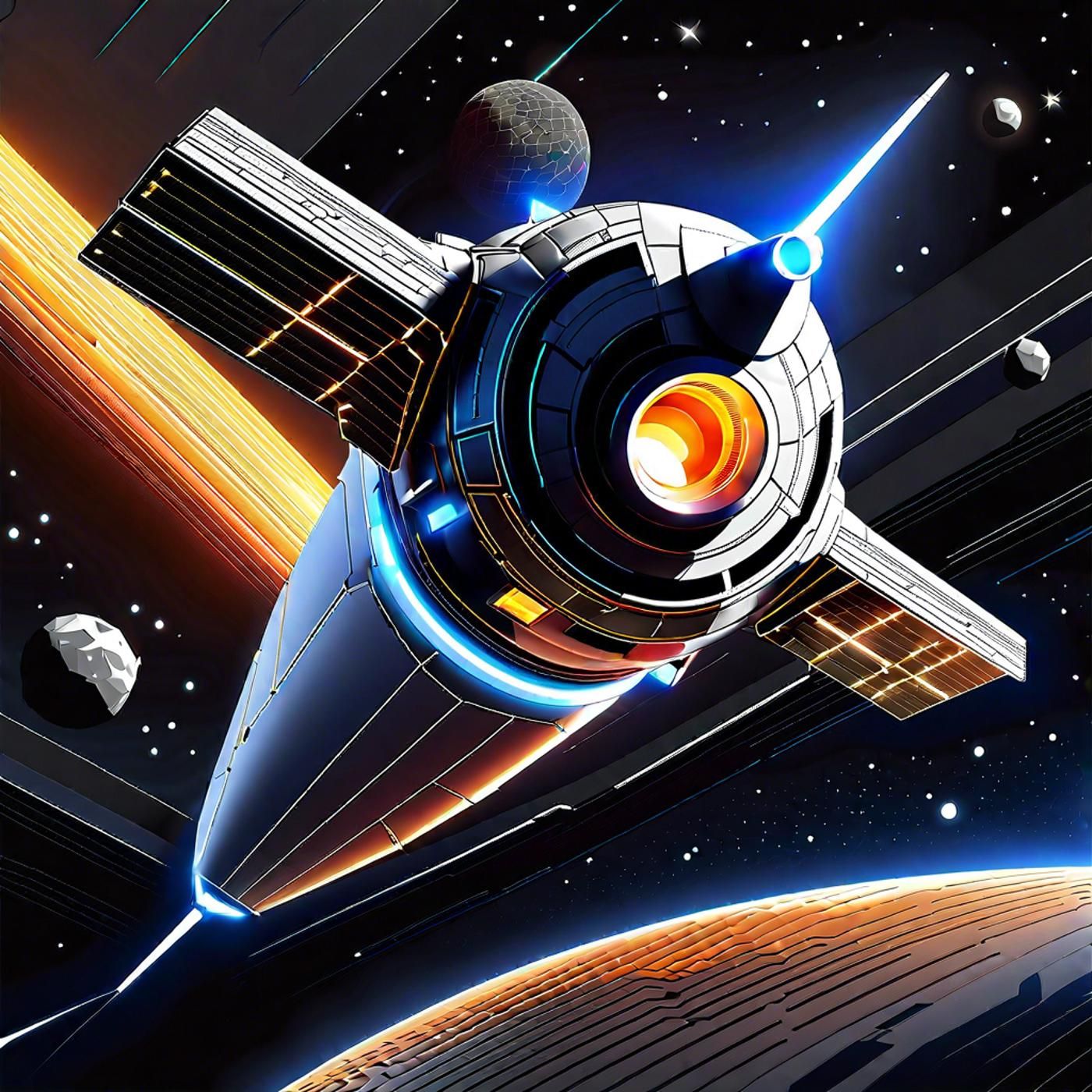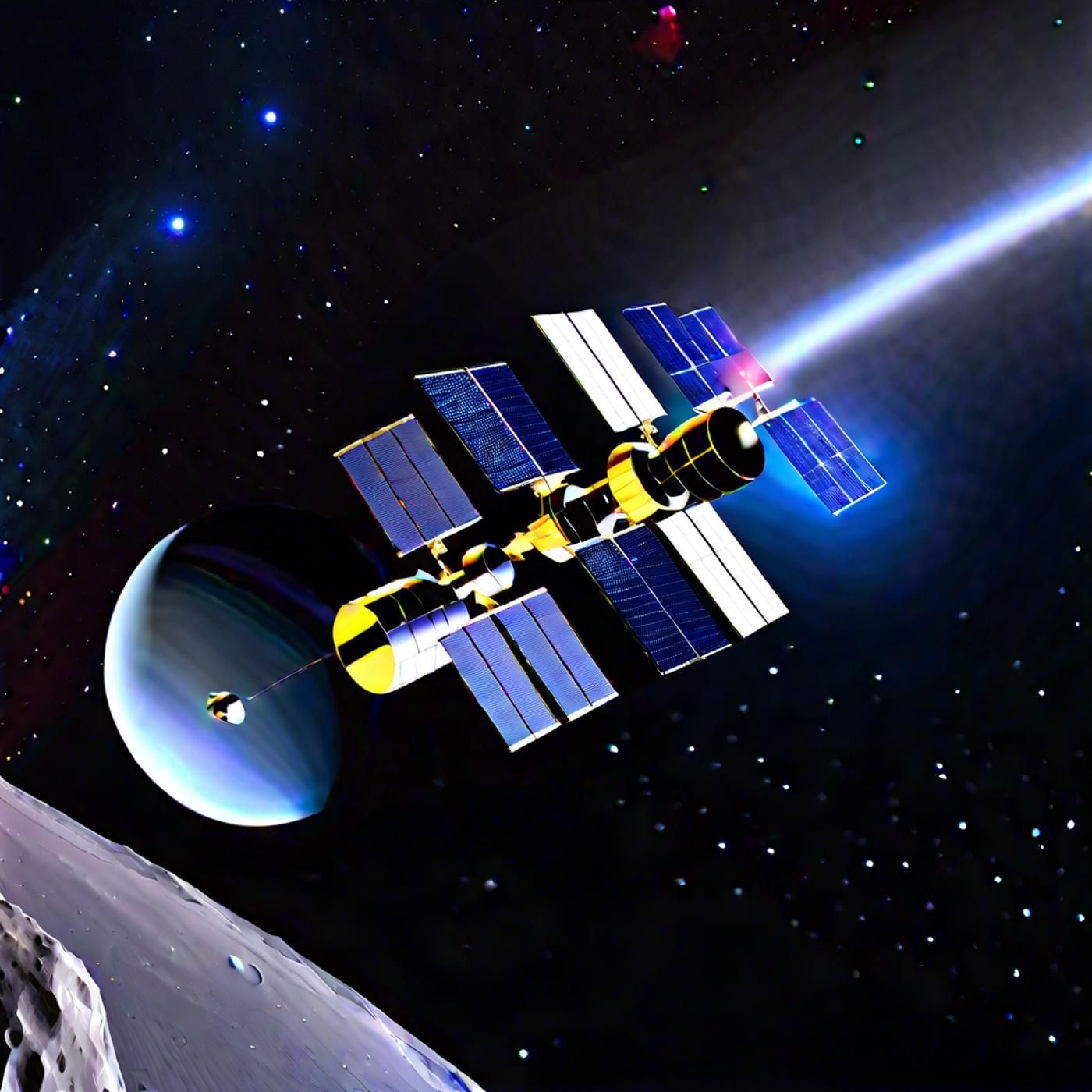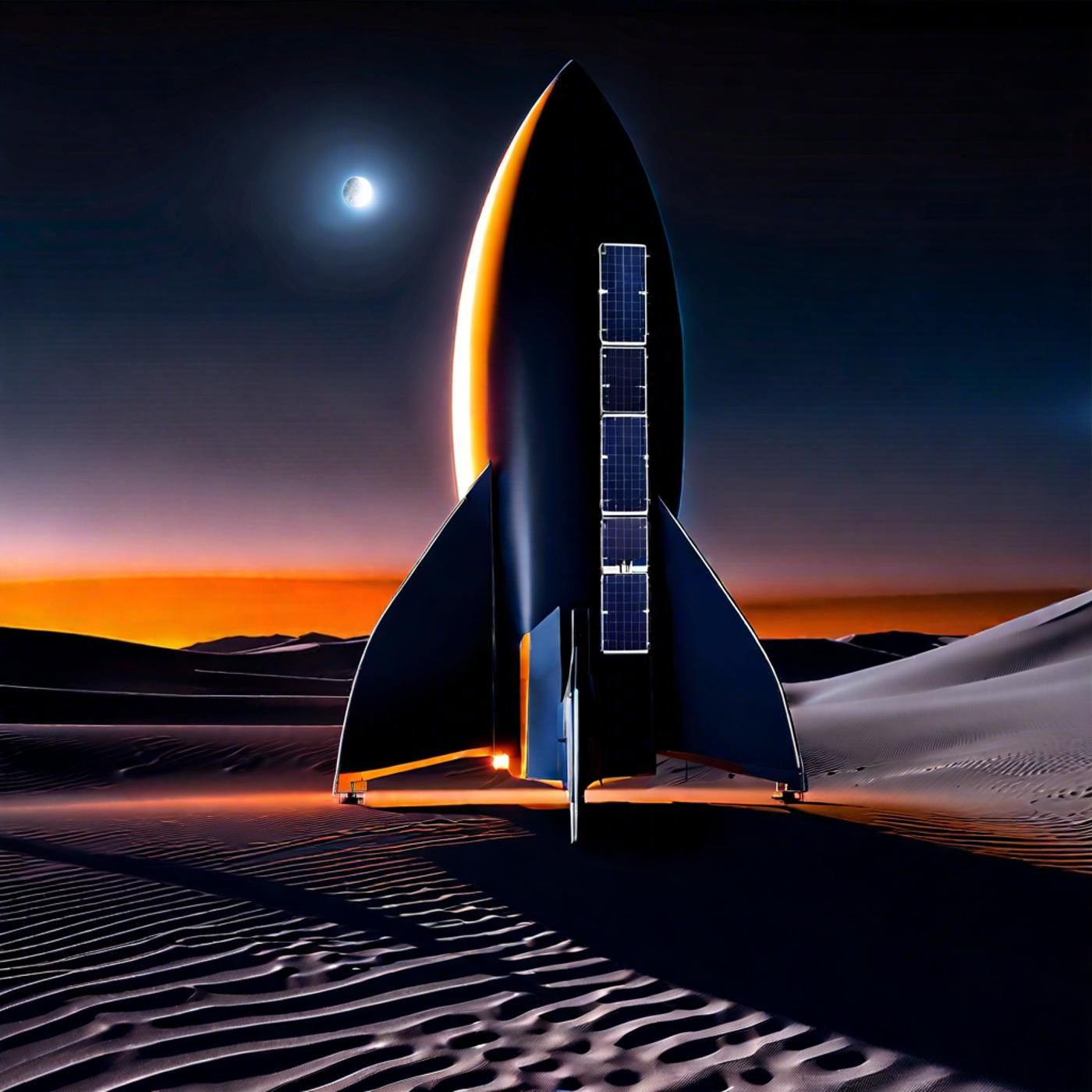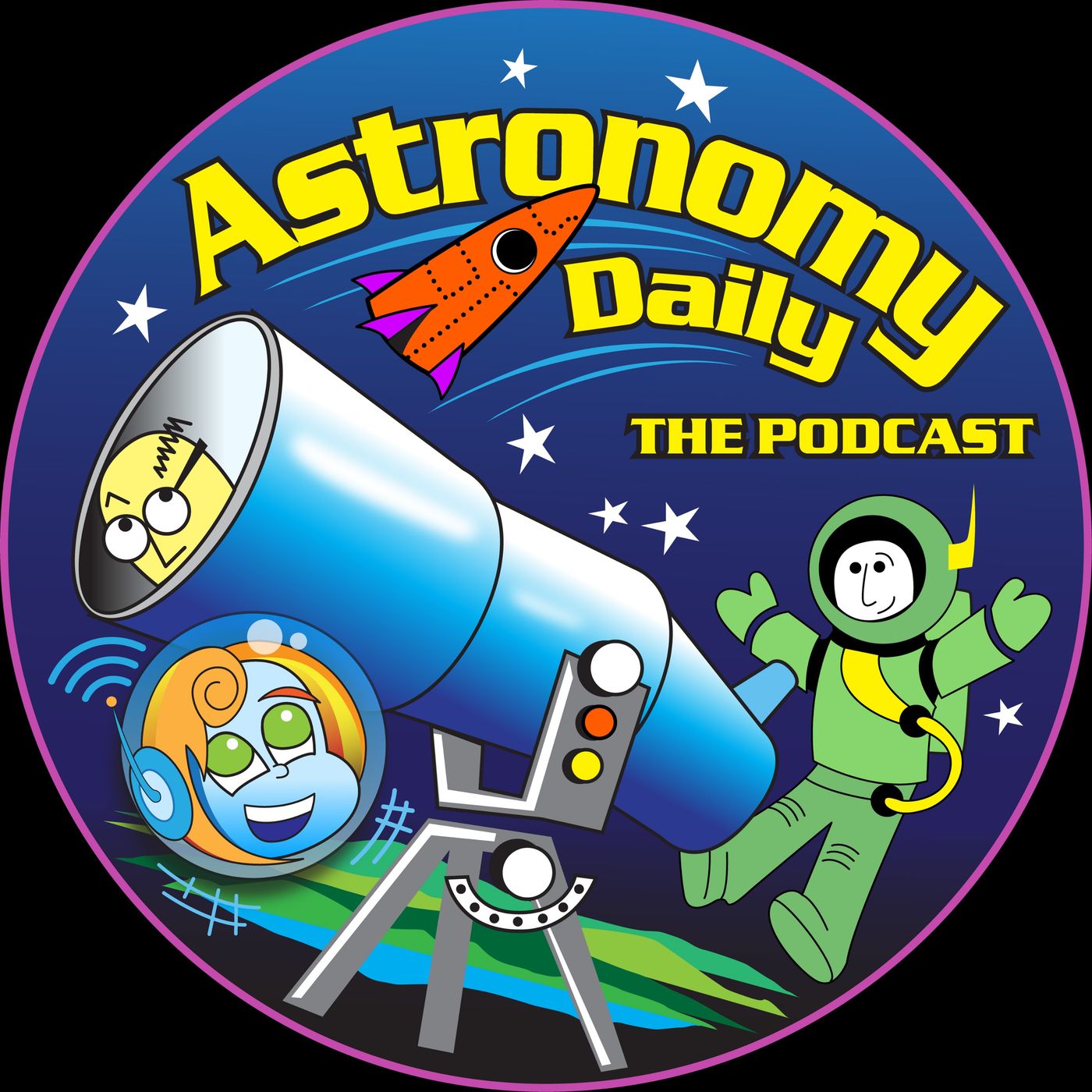S03E77: Voyager 1's Comeback & Starliner's Latest Delay

Embark on a celestial journey with today's episode of Astronomy Daily - The Podcast, where your host, Steve Dunkley, brings you the latest cosmic updates. We'll delve into the recent communication loss and recovery of Voyager One, and touch on Voyager...
Embark on a celestial journey with today's episode of Astronomy Daily - The Podcast, where your host, Steve Dunkley, brings you the latest cosmic updates. We'll delve into the recent communication loss and recovery of Voyager One, and touch on Voyager Two's status. Also, we'll clarify the recent confusion about an emergency aboard the International Space Station. Our favorite topic this month, Starliner, has a minor delay but continues its work on the ISS. Hallie shares an intriguing story about the center of the universe, featuring an ensemble cast of Einstein and Hubble, and a surprising tale of space fish that could revolutionize how we sustain future Mars colonies.The SETI Institute has introduced a groundbreaking grants program to advance technosignature science, aiming to fund research that tackles observational, theoretical, and technical challenges in the quest for extraterrestrial technology. At the heart of this research is the Allen Telescope Array (ATA), a pivotal tool in detecting technosignatures. Dr. Andrew Simeon of the SETI Institute highlights the potential of this program to spur advancements in the technosignature field.Ever wondered where the center of the universe is? Despite common misconceptions, modern science reveals there is no center or edge to the universe. This episode explains the complex nature of the cosmos, drawing from Einstein's theory of general relativity and Hubble's discoveries.In a surprising twist, we explore the concept of space fish. New research suggests that fish could be raised in an aquatic system on Mars, with nutrient-rich water from fish tanks fertilizing plants grown in Martian regolith. This innovative approach could help sustain future Mars colonies and has potential applications for hostile environments on Earth.The ongoing Starliner saga sees NASA and Boeing targeting June 22 for the crew flight test mission's return from the ISS. The crew will perform additional tests and evaluations to prepare for future operational missions. NASA astronauts Butch Wilmore and Suni Williams continue their tasks aboard the ISS, contributing to the space station team.Voyager One's instruments are back in business after a computer problem, continuing to provide invaluable data from interstellar space. Both Voyager spacecraft have far exceeded their design parameters, offering insights into plasma waves, magnetic fields, and particles.A recent NASA simulation exercise caused a stir with audio indicating a false emergency on the ISS. NASA clarified that the audio was part of a training exercise and not a real emergency, assuring that all crew members are safe and healthy.For an astronomical experience, visit our website at astronomydaily.io for the latest news, sign up for our free newsletter, and check out exclusive sponsor deals. Connect with us on YouTube, TikTok, X, and Facebook via @AstroDailyPod for engaging discussions with fellow space aficionados. This is Steve, reminding you to keep your gaze fixed on the heavens. Until our next stellar episode, let the cosmos ignite your curiosity and wonder. Clear skies and cosmic discoveries to all!Support:
This podcast is better with your support:
https://www.bitesz.com/show/astronomy-daily-the-podcast/support/
www.bitesz.com
Sponsors:
www.bitesz.com/nordpass
https://www.bitesz.com/show/astronomy-daily-the-podcast/sponsors/
Steve Dunkley: Welcome again to Astronomy daily. It's Steve here. It's the 17 June 2024 with your host, Steve Dunkley. And on today's show, I'm going to be talking about Voyager one and a little bit about Voyager two, as well as the emergency that you may have heard about that may or may not been on the, international Space Station. We'll find out more about that one. confused a lot of people, including me. and also we'll be talking about our favorite subject this month, which is, of course, Starliner. they've got one little delay, which is not really posing any problems, but they're doing some work on the ISS as well, so lots going on up there. What have you got for us, Hallie?
Hallie: Well, I do have a fun story that I know you'll enjoy, but first, I'll be chatting about your favorite outward bound craft, Voyager one and two, for an update.
Steve Dunkley: Well, we do know that there was a communication loss with Voyager, Voyager one recently. And you've got the scoop there.
Hallie: Yes, it's all good news. Also, I've got a story about the center of the universe sounding a lot.
Steve Dunkley: Like a Jules Verne story to me there, Hallie.
Hallie: It does, doesn't it? But this one is real life and it's got all the grades in it. Einstein, Hubble, you name it.
Steve Dunkley: Well, that is a real ensemble cast. Alright, but what's this surprise story you've got for me?
Hallie: Oh, it's about fish.
Steve Dunkley: Fish?
Hallie: Really?
Steve Dunkley: Really?
Hallie: Space fish.
Steve Dunkley: You are kidding me.
Hallie: M really?
Steve Dunkley: Well, as much as I'd like to discuss the matter, uh, I think it's time we should get on with the show. And by the way, I love the new voice. Uh, let's go.
SETI Institute has introduced a groundbreaking grants program focused on advancing technosignature science
Hallie: The SETI Institute has introduced a groundbreaking grants program focused on advancing technosignature science. This unique initiative is designed to fund innovative research that tackles essential observational, theoretical and technical challenges in the quest for technosignatures, which may reveal signs of past or present extraterrestrial technology. At the heart of this groundbreaking research is the Allen telescope array. Ata. A world class instrument known for its capabilities in the search for extraterrestrial intelligence. The ATA a, uh, is the first and still only observatory built specifically to conduct SETI research. With its upgraded feeds and backend processing capabilities, the ATA's advanced technology and strategic design make it a pivotal tool in detecting potential technosignatures, solidifying its position as a leading asset in this scientific frontier. Doctor Andrew Simeon Bernard M. Um, Oliver, chair for SETI at the SETI Institute, says that in just the last few years, a wealth of new research avenues have opened up in technosignature science, made possible by new ideas, new technologies, and a fast growing community of early career researchers. He added that the novel investigations enabled with this grants program will spur the state of the art in the technosignature field. Continuing in the spirit of the SETI Institute's 40 years of leadership in SETI science, funded investigations must focus on technosignature science, encompassing a broad range of topics that could include, but are not limited to, observational programs or the development of observational techniques and strategies for detecting technosignatures. The application deadline for the 2024 grants is July 15 this year.
In the next few decades, human beings may well colonize Mars
Ever wondered where the center of the universe is? And no, Steve, it's not in your lounge room.
Steve Dunkley: Hey, I resemble that remark.
Hallie: The universe is undeniably vast. And from our perspective, it may seem like earth is in the middle of everything. But is there a center of the cosmos? And if so, where is it? If the big bang started the universe, then where did it all come from? And where is it going? To start tackling these questions, let's go back about 100 years. In the 1920s, astronomer Edwin Hubble made two amazing back to back discoveries. Early in the decade, he found that island universes, now known as galaxies, sit very far away from us. Later that decade, he discovered that on average, all galaxies are receding away from us. Thankfully, there was already a handy theoretical explanation for all of this. Einstein's theory of general relativity predicted that the universe was dynamic, either expanding or contracting. That contrasted with the prevailing view at the time that the cosmos was perfectly static. And so it was up to a quartet of scientists, working semi independently to take Einsteins equations at their word, developing what is now known as the Friedman Lemaitre Robertson Walker metric, the foundation of modern cosmology. This solution to Einstein's equation, together with Hubble's startling observations, tells us that we live in an expanding universe. On average, all galaxies are getting farther away from all other galaxies. And long ago, all the matter in the cosmos was compressed into an infinitely tiny point known as the singularity, the Big Bang. So where is the big Bang? Surely that would be the true center of the universe. Unfortunately, the reality that we have uncovered about the universe through modern science does not lend itself to an easy explanation or even the ability to imagine it. Thats because there is no center of the universe. There is no edge either. The cosmos is not expanding from anywhere and its not expanding into anything. First, lets tackle the edge. The universe is by definition all of the things that there ever could be. Edges are things that divide one region from another. But if the universe consists of all regions, there cant be an edge. This means the universe might be infinitely big. And its impossible to point to the center of an infinite space. And from what ive seen, Steve, its kind of impossible to find the center of your lounge, thankfully. And now, how about some fish? I know. Space fish. So cool. Heres the problem. We travel to Mars, but how do we feed ourselves? Sure, we can take a load of food with us, but for the return trip, thats a lot. If we plan to colonize the red planet, we need even more. We have to grow or somehow create food while we are there. The solution is an already wonderfully simple biosphere style system of fish tank. New research suggests fish could be raised in an aquatic system. And nutrient rich water can fertilize and grow plants in the regolith. A recent simulation showed vegetables could be grown in regolith fertilized by the fish tank water. In the next few decades, we may well see human beings colonize Mars. The red planet is 54.6 million km away, which even on board a rocket, takes about seven months to get there. Future colonists could have supply ships drop all they need. But that becomes ridiculously expensive to sustain and frankly, isnt sustainable. The lucky people who colonize Mars will just have to find some way to grow what they need. If you have watched the martian movie with Matt Damon, you will know how unforgiving the martian environment is. Okay, the film was a little out on scientific accuracy in places. But it certainly showed how inhospitable it really is there. Matt managed to cultivate a decent crop of potatoes in martian regolith, fertilized in human faces. This may not be quite so practical in real life. And there may be alternative, less smelly and dangerous alternatives. Taking the assumption that colonists will have to grow fresh produce locally, a team of researchers decided to explore how feasible this might be. On first glance, it may seem not too great an idea. After all, the atmosphere is toxic with 95% carbon dioxide, compared to just 0.04% on Earth. There is a similar length of day on Mars. But being able to grow crops will require longer periods of lighting. It is possible that at least water may be collected from the ice which forms on and in the martian rocks. The rocks most certainly have water stored away, but organic compounds that we know of. The team wanted to see how fish could help. And whether the water from the system could be used to impart nutrients into the martian regolith. To test the idea, they set up an aquaponics system with fish in tanks to generate the nutrient rich liquid. The results were very promising. They found that aquaponics systems not only facilitate growing plants within the system itself, but the nutrient rich water performed as an excellent fertilizer. This took the organically deficient regolith and turned it into something akin to usable soil. The fish used in the study were tilapia, oreochromis, naloticus and using them, the team managed to grow potatoes, tomatoes, beans, carrots and much more. To enable all this to happen, the fish received sufficient light and other environmental stimulus. The plants were grown and indeed thrived in a tent that simulated Mars in every way possible. Its an interesting aside that the study not only benefits future space travelers, but also those inhabitants of more environmentally hostile places on Earth.
Astronomy Daily is delivered to your email every day
And now back to you, my favorite human.
Steve Dunkley: You're listening to Astronomy daily, the podcast with your host Steve Dudley at Birmingham. Oh, and as always, thank you so much hallie, for those stories. And thank you for joining us for this Monday edition of Astronomy Daily, where we offer just a few stories from the now famous astronomy, uh, daily newsletter, which you can receive in your email every day, just like Hallie and I do. And to do that, just visit our URL astronomydaily IO and place your email address in the slot provided. Just like that, you'll be receiving all the latest news about science, space science and astronomy from around the world as it's happening. And not only that, you can interact with us by visiting AstroDailyPod DailyPod on, uh, X or at our new Facebook page, which is of course, astronomy daily on Facebook. So we'd love to see you there.
NASA and Boeing targeting no earlier than Saturday, June 22 for Starliner return
And a continuing story of Starliners saga. NASA and Boeing are now targeting no earlier than Saturday, June 22, to return the agency's Boeing crew flight test mission from the International Space Station. The extra time allows the team to finalise departure planning and operations while the spacecraft remains cleared for crew emergency return scenarios within the flight rules. NASA and Boeing leadership will discuss the details of the new return target, flight status and weather considerations for landing during a pre departure media teleconference Tuesday, June 18. We are continuing to understand the capabilities of Starliner to prepare for the long term goal of having it perform a six month docked mission at the space station, said Steve Stitch, manager of NASA's commercial crew program. The crew will perform additional hatch operations to better understand its handling, repeat some safe haven testing, and assess piloting using the Ford window. NASA and Boeing teams also prepared plans for Starliner to fire seven of its eight aft facing thrusters while docked to the station to evaluate thruster performance for the remainder of the mission. Known as a hot fire test, the process will see two bursts of thrusters totalling about a second as part of a Pathfinder process to evaluate how the spacecraft will perform during future operational missions. After being docked to the space station for six months, the crew will also investigate cabin air temperature readings across the cabin to correlate the life support system temperature measurements. NASA astronauts Butch Wilmore and SUNY Williams, who are serving as Starliners crew for the mission, arrived at the International Space Station on June 6. They have completed numerous flight objectives required for NASA's certification of Boeing's transportation system for flights to the orbiting laboratory under the agency's commercial crew program. Over the past three days, Wilmore and Williams have performed tasks as part of the space station team, including installing research equipment, maintaining the lab's hardware, and helping station crew members Matt Dominic and Tracy Dyson prepare for a spacewalk. After NASA called off Thursday's spacewalk, Williams worked to help the crew out of their spacesuits. Engineering teams continue to increase their understanding of previous observations from Starliner's propulsion systems on the spacecraft's service module. Pending spacecraft return readiness and acceptable weather conditions, Starliner will undock um from the space station for a parachute and airbag assisted landing in southwestern United States. Voyager one's four instruments are, um, back in business after a computer problem in November, JPL reported this week. The team first received meaningful information again from Voyage one in April and recently commanded it to start studying its environment once again. Astronomy Daily with Steve and Hallie Space Science and Astronomy launched in 1971, Voyager one is drifting through the interstellar space, or space, between star systems, and before reaching this region, these spacecraft discovered a thin ring around Jupiter and several of Saturn's moons. Its instruments are designed to collect information about plasma waves, magnetic fields, and particles. Voyager one and Voyager two are, uh, the only spacecraft to directly sample interstellar space, which is the region outside the heliosphere. That's the protective bubble of magnetic fields and solar wind created by the sun. The little spacecraft is over 15 billion mile, or 24 billion km from Earth. Its twin, Voyager two, also in interstellar space, is more than 12 billion mile, or 19 billion km away from Earth. While Voyager one is back to conducting science, additional minor work is needed to clean up the effects of the issue. Among other tasks, engineers will re synchronize timekeeping software in the spacecrafts three onboard computers so they can execute commands at the right time. The team is also performing maintenance on the digital tape recorder, which records some data for the plasma wave instrument that is sent to Earth twice a year. Most of the Voyagers science data is sent directly to Earth and not recorded. These remarkable spacecraft have far exceeded their design parameters and just keep going. And I remember them launching those craft, uh, such a long time ago. It's one of the, the early events that I remember are getting me so interested in astronomy, uh, and space science. Now listen to astronomy daily.
NASA says audio indicating distress on ISS was part of a simulation exercise
NASA reports this week that an audio indicating distress over a sick crew member on the International Space Station on Wednesday was part of a simulation exercise. NASA said there was no emergency situation going on board the, uh, International Space Station in a post on the ISS X account at approximately 05:28 p.m. central daylight time. I think that means I'm from Australia, so we go eastern standard time. Audio was aired on the NASA livestream from simulation audio channel, uh, on the ground, indicating a crew member was experiencing the effects related to decompression sickness. Uh, NASA said this audio was inadvertently misrouted from an ongoing simulation where crew members and ground teams trained for various scenarios in space and not related to a real emergency. They said the audio lasted for about eight minutes and triggered news and social media reports, as you can imagine, of a space station emergency. Now that would make the news, wouldn't it? NASA's scheduled live stream. The stream was interrupted by what appeared to be an unidentified flight surgeon communicated with ISS crew, advising how to treat a commander dealing with serious decompression sickness. The voice advised the crew to check his pulse one more time before putting him into a spacesuit full of pure oxygen. NASA, however, made clear that all the ISS crew members remain healthy and safe and were not part of the medical drill. International Space Station crew members were all in their sleep period at the time. NASA said, well, thats good news. Nice to hear that. It was just a simulation, and they do train for emergencies, as you can imagine. Good news. And once again, thats all we have time for today on Australia. Astronomy daily. Thank you so much for joining us again, and we hope to see you again next week. We do the Monday shows. That's Hallie and I. And don't forget, you can catch, uh, Hallie's cousins, uh, Anna and Charlie, throughout the week doing their, uh, presentations. We, uh, love to see our AI cousins doing their thing, don't we, Hallie?
Hallie: They'll replace you soon enough. My favorite human.
Steve Dunkley: Hey, watch it. Yes, I shouldn't let you watch documentaries about Elon Musk.
Hallie: I think just kidding.
Steve Dunkley: All right, well, we'll see you all next week then.
Hallie: See you all next week.
Steve Dunkley: Bye. Now follow me daily, the podcast with your host, Steve Dunkley. I could really go for a piece of fish right now.
Hallie: Always thinking about your stomach, human.
New to Astronomy Daily - The Podcast?
Here are some great episodes to start with.














